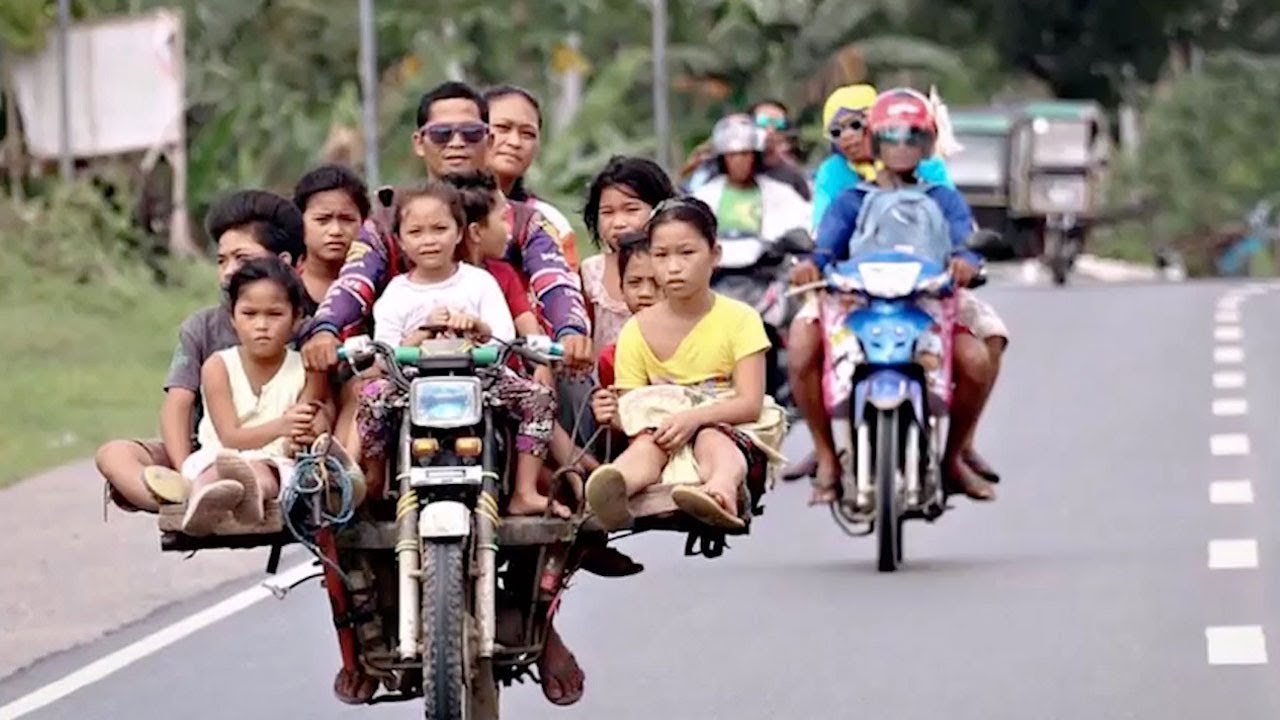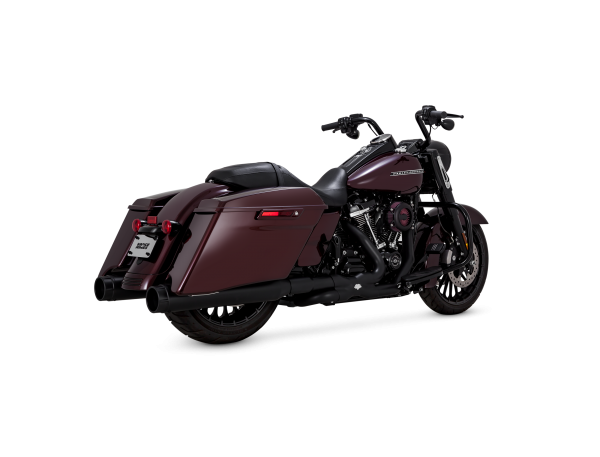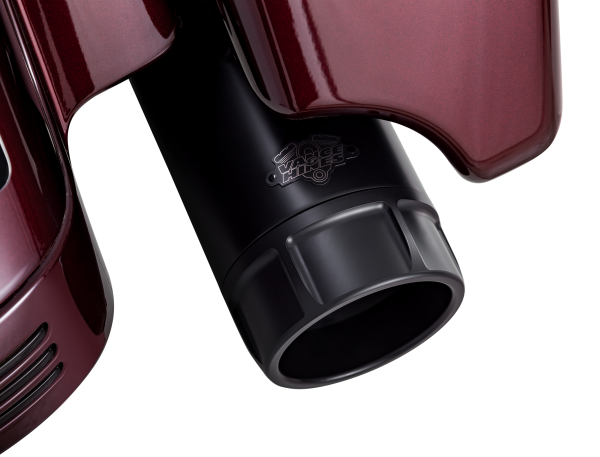Monster Energy® Kawasaki’s Eli Tomac Captures First 450SX Win of the Season at Round 3
By Wayfarer | | General Posts
 January 18, 2020 | Angel Stadium | Anaheim, Calif.
Foothill Ranch, Calif. (January 19, 2020) – Eli Tomac and his No. 3 Monster Energy® Kawasaki KX™450 ascended to the top step of the podium at Round 3 of Monster Energy AMA Supercross, an FIM World Championship. Racing returned to Anaheim, California for the second and final stop at Angel Stadium, with Tomac grabbing his 28th career 450SX win, meanwhile 450SX rookie and teammate Adam Cianciarulo continued to impress by finishing in sixth place amongst the title contenders.
For the third week in a row, the Monster Energy Kawasaki dynamic duo kicked off the day by qualifying with the two fastest times as Cianciarulo clocked the fastest lap time of 51.865 with Tomac hot on his heels in second with a 51.934. The two Monster Energy Kawasaki riders were the only two riders to put in a hot lap in under 52 seconds. For the third week in a row, Cianciarulo was the fastest qualifier heading into the night show.
Tomac lined up for the first 450SX heat race and right out of the gate was able to tuck under the competition in the first turn. The No. 3 machine wasted no time getting out front and quickly darted away from the competition as he built an impressive nine-second gap over the field and went onto claim his first 450SX heat race win of the season.
Carrying the confidence of qualifying into the night show, Cianciarulo shot out of the 450SX Heat 2 gate in second place, but by the second turn had already claimed the lead. Cianciarulo began clicking off laps where he was able to lead the first half of the heat race before surrendering the top spot and finishing second.
In the 450SX Main Event both Tomac and Cianciarulo found themselves wedged out and sitting mid-pack after the first turn. Both racers began making quick work of the competition and followed one another toward the front of the pack. Tomac was able to maneuver his KX450 around the field and sliced his way into first place just before the halfway point of the race and never looked back, claiming his first 450SX victory of the year. Tomac’s win puts him into third place in the championship point standings and only five points back from the leader. Cianciarulo was able to maintain a top-5 position for the majority of the race but would ultimately cross the finish line in sixth place overall.
“Today was the day we worked for all offseason. Things were just clicking all day, we qualified second coming into the night, and in the first heat race we were able to get out front early and just kind of set the tone for the rest of the night. In the main, I didn’t get the best jump of the gate, but I was able to find some good passing lanes and remained aggressive in the opening laps. The two sets of whoops and dragon back were so mentally and physically demanding, I believe that is where I was able to separate myself from the rest of the pack. All in all, I can’t thank my team enough, the whole Monster Energy Kawasaki crew for all the hard work this past week, it definitely paid off tonight. I am looking forward to Glendale next weekend and to race a Triple Crown. My first 450SX win came in Phoenix and the high-intensity Triple Crown format really suits my racing style.”
– Eli Tomac
“Today was a bit of a rollercoaster ride for me. I was able to qualify on top again which always helps going into the night show. In my heat race, I was able to get out front but my buddy Ken (Roczen) got by and I settled into second. In the 450SX Main Event, despite my start, I felt like I was riding well and making good progress. I began to go forward and was able to make my way up to fourth, but unfortunately, I made some minor mistakes that cost me a better result. Sixth place isn’t where I want to be, but it is a long season and we are going to keep grinding. I am looking forward to the Triple Crown format next weekend in Glendale and the three gate drops we get to race.”
– Adam Cianciarulo
After starting the day off qualifying with the second-fastest lap time, Monster Energy/Pro-Circuit/Kawasaki’s Austin Forkner set the tone for the night by nabbing the win in the first 250SX heat race of the night. Forkner did so in dominating fashion by winning with an impressive 10-second margin over second place.
In the 250SX Main Event the No. 52 machine of Forkner got out to a respectable start and by lap two had already worked his way into third place. With five minutes left to go in the 250SX Main Event, Forkner went for a wild ride in the whoops that threw him to the ground violently. Forkner remounted his KX™ and despite the setback, he salvaged as many points as he could, crossing the finish line in 17th place.
Forkner aims for a bounce back ride in Glendale at the first Triple Crown race of the year. In 2019, Forkner became the first rider to sweep all three Main Events in a single Triple Crown event.
“Well there isn’t much for me to say at this point. Tonight, was a night I just want to forget and move on from. I felt good all day and got a great heat race win aboard my KX™250, but that costly mistake in the whoops in the main event ruined my evening. My team and I are going to regroup and probably spend a good amount of time hammering out whoops this next week. I had a lot of fun racing the Triple Crown races last year, so I am just ready to get to Glendale and redeem myself.”
– Austin Forkner
January 18, 2020 | Angel Stadium | Anaheim, Calif.
Foothill Ranch, Calif. (January 19, 2020) – Eli Tomac and his No. 3 Monster Energy® Kawasaki KX™450 ascended to the top step of the podium at Round 3 of Monster Energy AMA Supercross, an FIM World Championship. Racing returned to Anaheim, California for the second and final stop at Angel Stadium, with Tomac grabbing his 28th career 450SX win, meanwhile 450SX rookie and teammate Adam Cianciarulo continued to impress by finishing in sixth place amongst the title contenders.
For the third week in a row, the Monster Energy Kawasaki dynamic duo kicked off the day by qualifying with the two fastest times as Cianciarulo clocked the fastest lap time of 51.865 with Tomac hot on his heels in second with a 51.934. The two Monster Energy Kawasaki riders were the only two riders to put in a hot lap in under 52 seconds. For the third week in a row, Cianciarulo was the fastest qualifier heading into the night show.
Tomac lined up for the first 450SX heat race and right out of the gate was able to tuck under the competition in the first turn. The No. 3 machine wasted no time getting out front and quickly darted away from the competition as he built an impressive nine-second gap over the field and went onto claim his first 450SX heat race win of the season.
Carrying the confidence of qualifying into the night show, Cianciarulo shot out of the 450SX Heat 2 gate in second place, but by the second turn had already claimed the lead. Cianciarulo began clicking off laps where he was able to lead the first half of the heat race before surrendering the top spot and finishing second.
In the 450SX Main Event both Tomac and Cianciarulo found themselves wedged out and sitting mid-pack after the first turn. Both racers began making quick work of the competition and followed one another toward the front of the pack. Tomac was able to maneuver his KX450 around the field and sliced his way into first place just before the halfway point of the race and never looked back, claiming his first 450SX victory of the year. Tomac’s win puts him into third place in the championship point standings and only five points back from the leader. Cianciarulo was able to maintain a top-5 position for the majority of the race but would ultimately cross the finish line in sixth place overall.
“Today was the day we worked for all offseason. Things were just clicking all day, we qualified second coming into the night, and in the first heat race we were able to get out front early and just kind of set the tone for the rest of the night. In the main, I didn’t get the best jump of the gate, but I was able to find some good passing lanes and remained aggressive in the opening laps. The two sets of whoops and dragon back were so mentally and physically demanding, I believe that is where I was able to separate myself from the rest of the pack. All in all, I can’t thank my team enough, the whole Monster Energy Kawasaki crew for all the hard work this past week, it definitely paid off tonight. I am looking forward to Glendale next weekend and to race a Triple Crown. My first 450SX win came in Phoenix and the high-intensity Triple Crown format really suits my racing style.”
– Eli Tomac
“Today was a bit of a rollercoaster ride for me. I was able to qualify on top again which always helps going into the night show. In my heat race, I was able to get out front but my buddy Ken (Roczen) got by and I settled into second. In the 450SX Main Event, despite my start, I felt like I was riding well and making good progress. I began to go forward and was able to make my way up to fourth, but unfortunately, I made some minor mistakes that cost me a better result. Sixth place isn’t where I want to be, but it is a long season and we are going to keep grinding. I am looking forward to the Triple Crown format next weekend in Glendale and the three gate drops we get to race.”
– Adam Cianciarulo
After starting the day off qualifying with the second-fastest lap time, Monster Energy/Pro-Circuit/Kawasaki’s Austin Forkner set the tone for the night by nabbing the win in the first 250SX heat race of the night. Forkner did so in dominating fashion by winning with an impressive 10-second margin over second place.
In the 250SX Main Event the No. 52 machine of Forkner got out to a respectable start and by lap two had already worked his way into third place. With five minutes left to go in the 250SX Main Event, Forkner went for a wild ride in the whoops that threw him to the ground violently. Forkner remounted his KX™ and despite the setback, he salvaged as many points as he could, crossing the finish line in 17th place.
Forkner aims for a bounce back ride in Glendale at the first Triple Crown race of the year. In 2019, Forkner became the first rider to sweep all three Main Events in a single Triple Crown event.
“Well there isn’t much for me to say at this point. Tonight, was a night I just want to forget and move on from. I felt good all day and got a great heat race win aboard my KX™250, but that costly mistake in the whoops in the main event ruined my evening. My team and I are going to regroup and probably spend a good amount of time hammering out whoops this next week. I had a lot of fun racing the Triple Crown races last year, so I am just ready to get to Glendale and redeem myself.”
– Austin ForknerMotorcycle taxis and inclusive mobility
By Wayfarer | | General Posts

from https://www.rappler.com
The online platform industry – which is easy to enter, is relatively inexpensive, and is clearly innovative – is simply for now, difficult to regulate
In our view, there is enough ambiguity in the law that allows for a provisional framework in regulating motorcycle taxis. A similar approach was used in dealing with Uber and Grab when they began operating in the Philippines. Even without a law, the LTFRB established a system to regulate Transportation Network Companies (TNCs) and Transportation Network Vehicle Services (TNVS) that continues to be the regulatory framework for that type of service today. The emergence of motorcycle taxis in the past few years has created a lot of debate. Replete with controversies, the motorcycle taxi business has battled car owners and drivers, law enforcers, and regulators. Some argue that it is prohibited by law as Republic Act No. 4136 or the Land and Traffic Code specifically excludes two-wheeled motor vehicles as allowable public transportation; others believe it has become the most viable option for segments of the riding public seeking out a good, reliable, and (relatively) inexpensive transport system.
It is of course urgent for Congress to enact a law on motorcycle taxis. We have had enough experience to come up with good regulations. Although there are currently 9 pending bills in Congress as of this writing, in the meantime, the government must regulate pending legislation.
Regulation absent legislation
As a middle ground for pending legalization of motorcycle taxis, a pilot run was allowed (but limited geographically to Metro Manila and Metro Cebu and extended through March 23, 2020) by the Inter-agency Technical Working Group (TWG) created to monitor the current stream of motorcycle taxi operations. The TWG’s tasks are to set regulatory guidelines to ensure safety and security, ensure compliance of data sharing, general monitoring and evaluation, price regulation, setting of vehicle specifications and operational requirements, and to provide a final report to the DOTr and the House of Representatives, to aid the latter in its future and potential legislative actions. The same TWG, moreover, has now allowed two new players, JoyRide and Move It, to join the current industry player, Angkas.
The regulatory guidelines released last December 19, 2019, is the working document which the pilot run for motorcycle taxis is based on. This document, however, does not contain the ride-capping mechanism imposed by the LTFRB. Section 11 of the document included operational requirements imposed upon the ride-hailing platforms. It included that (1) all bookings shall only be made within and via the app platform; (2) accident insurance should be secured on par with or above Passenger Personal Accident Insurance Program (PPAIP) rates; (3) a comprehensive safety campaign should be conducted for the public so that all passengers become knowledgeable; (4) existing motorcycle units with OR/CR as of December1, 2019 shall be allowed to be included in the pilot implementation; and (5) “one motorcycle-one rider” must strictly be observed in the implementation. Participating Riders shall be registered to one ride hailing platform only. The last statement is deemed problematic.
Competition vis-à-vis regulation
The new and current players are capped at 39,000 registered bikers – or a limit of about 10,000 bikers per transport network company (TNC) in Metro Manila and 3,000 in Metro Cebu. Angkas strongly opposed this cap as their registration is at the 27,000-mark as of late December 2019. Thus, to impose the price cap means 17,000 of its riders can lose their means of livelihood. As a remedy, it has asked the Mandaluyong City Regional Trial Court to issue a temporary restraining order against the policy. This was granted as the court had said that the policy “puts a cap on the number of bikers that Angkas is entitled to” and enjoined the respondents “from performing any act that limits and impairs their rights to deal with and continue with their contracts with Angkas.” This TRO was only valid for 72 hours.
In a similar fashion, the Philippine Competition Commission (PCC) has, through one of its commissioners, stated that “forcing Angkas to displace 17,000 riders will take away what was rightfully obtained by the company” and appealed to the LTFRB to consider other solutions such as to allow riders to use more than one ride-hailing app.
It is in this very precept that the entry cap imposed shows that the LTFRB regulation is anti-competitive. The regulator’s perspective in this regard,looks to defend its policy of preventing Angkas from becoming monopolistic in nature. However, anti-competitive conduct does not rely solely on how big or how dominant a particular business/company has become; but rather also looks at the interplay of other factors surrounding the circumstances of the industry. Competition authorities all over the world have allowed individual riders/drivers multiple registration in the different ride-hailing platforms (driver/operator non-exclusivity clause) as a solution for competition rather than to restrict. A fundamental concept of competition, after all, is not to restrict entry but to open the market as freely as possible to allow small and big players alike to participate in the market.
It can be conceded that anti-competitive conduct may be affected when unfair individual fare pricing affects the industry as a whole. As an illustration, surge pricing has been disallowed and specifically included in the regulatory guidelines of the LTFRB. This also makes fare prices fixed a justified regulatory intervention. Likewise, it is also not a displaced fear that Angkas might take control because of its first-mover advantage and more commercially popular reputation in the motorcycle taxi market, which can greatly affect consumer welfare in the long term. Look at how Grab has emerged in the TNC market.
Moreover, the ongoing debate on the seemingly overlapping competition and regulatory issue does not end today. In fact, in many parts of the world, the ride-hailing platforms and similar digital platforms which disrupt different sectors (not limited to transportation alone), are being declared illegal due to industry concerns of “virtual monopoly,” tax arbitrage, surge pricing violations, and labor issues. Some of these issues are not even anti-competitive conduct per se but can be considered more as regulatory setbacks.
We stop at this rider cap issue for now but there lies the bigger problem we might face in the next few years. The online platform industry – which is easy to enter, is relatively inexpensive, and is clearly innovative – is simply for now, difficult to regulate. Joseph Schumpeter is right to think of “creative destruction.” That is precisely what ride hailing platforms has become in the transport industry. Now transportation has to battle the bigger issue of safety and mobility. Do ride-hailing platforms for motorcycles, specifically provide safe mobility for people?
There is a clear pathway so that motorcycle taxis can be mainstreamed into our public transport system
The poor mass transportation system in the Philippines has brought about evident consequences to the traffic and commute situation in the Philippines. This is exacerbated by the car-riding culture that has been inculcated because of the sheer lack (or absence) of proper safe systems for pedestrians and commuters. A safe system does not only include the infrastructure of trains, buses, jeepneys, etc, or the physical infrastructure of roads and engineering systems, but includes the whole spectrum of pedestrian walkways, measured distances of public transport stops, road signs, information mechanisms for traffic flow, and sound policy of implementation and enforcement (see the failure of the PUV modernization policy). This deficiency in a safe system approach to transport has birthed the demand for an alternative form of transportation, that is, motorcycles; and corollarily, as a form of public transport, in the guise of motorcycle taxis.
Globally, the World Health Organization (WHO) has reported evidence that motorcyclists are among the most vulnerable road users (VRUs), along with the pedestrians and cyclists. More than half (54%) of all road traffic deaths are among these VRUs. These vehicles are a significant contributor to deaths and injuries by reason of their large number on the roads, their sharing of the roads with bigger vehicles such as cars and buses, and their innate vulnerability for crash impacts because of the absence of a protective shell present in other types of vehicles. This vulnerability is further augmented by the behaviour of riders on the road such as “zigzagging,” lane filtering, and other unique capacities of motorcycling on the roads. Thus, in the Philippine context, where motorcycles are voluminous, the question of safety when riding a motorcycle is addressed through the enactment of a Helmet Law which imposes to all motorcycle riders the use of helmets.
If in such a case that motorcycle taxis are legalized, there is a higher degree of diligence to be imposed upon public transportation vehicles or “common carriers,” that is, the care required is that of extraordinary diligence. This can prove to bring about implementation problems for it requires an effective and truly working safe system – from the provision of proper exclusive motorcycle lanes, enforcement of traffic laws and regulations, up to par safe specifications for the motorcycles, full compliance of helmet use and safety standards, ready emergency response, and proper training and behaviour of both riders and its passengers. This must go hand-in-hand with educating riders and passengers alike of the recommended behaviour on the roads while aboard a motorcycle and a provision for proper feedback mechanism to improve deficiencies and insufficiencies. Because apart from mobility itself, it is the government’s duty to protect its citizens to be safe at all times.
Motorcycle taxi riders often view motorcycles as a more convenient form of transportation because they are allowed to reach their destination on time beating traffic and are cheaper than taking a cab or Grab (making it more embraceable to the riding masses). Motorcycle taxis also allow riders to be transported to bus, train, or jeepney stops more conveniently and “safely,” as pedestrian accommodations are not always friendly. This unfriendliness has been a result of poor urban and transport planning over the years. Mobility then comes in but admittedly works better if safety is its partner. It can also be argued that making motorcycle taxis legal now is just a band-aid solution to the problem of public transportation, where mass transport is, in the long-term, more reliable and efficient for it transports more people to their destination, rather than a one-to-one correspondence which can be considered more costly in the long-run. This does not equate simply in the monetary costs but also in the lives lost (road crashes and vulnerability) and health impacts (pollution) because of unsafe conditions.
Motorcycle taxis are inexpensive for both the riders and the riding public. Motorcycles allow for personal mobility for countries with smaller per capita purchasing power (as in the Philippine case). It is also fuel-efficient, with an average consumption of 60 kilometers per liter of gasoline and leave less carbon footprint. In the current state of the country where income has not caught up with inflation, cheap is a necessary public good. Motorcycles also allow for faster travel time because of their ability to split lanes and go through narrower spaces beating traffic in record time and reduces risks of losses in terms of income and productivity.
These pros must be weighed on the balance with its cons. The second-largest affected vehicle classification of road crash incidents is the motorcycle class second to cars. While Helmets help reduce deaths and injuries, they are merely secondary safety devices which are used to prevent injuries from worsening. Other road practices must still be properly observed by the motorist. There is also the issue of road security. Absent proper identifying marks such as operator helmets, jackets, or vests, colorum motorcycle taxis may be mistaken as “riding-in-tandem” or motorcycling-riding suspects capable of committing crimes on the road.
Inclusive mobility as the solution
This debate cannot end unless citizens see a real solution for transport. For ordinary Filipinos, the motorcycle is a cheap and fast form of transport. For car users, motorcycles can disrupt traffic flow in the roads because of their lane splitting and filtering between other vehicles. In this light, the main issues to consider are (1) road crashes which continue to increase (and will continue to increase as volume increases); and (2) traffic violations which need to be enforced better because motorcycles are subjected to same traffic laws and regulations (e.g., speed, helmet use, distracted driving, drunk-driving, overtaking, lane splitting, lane filtering, etc). Violation of some of these rules has been one of the primary advantages of motorcycles – for its ability to facilitate faster mobility and avoid the traffic congestion. Lane splitting, however, has proved to have other benefits. Motorcycles’ lane splitting has removed commuters from cars, faster travel time through utilisation of road space, and improves fuel efficiency even in extreme weather.
Therefore, in the interim, as we wait for the promise of mass transport and proper infrastructure that can ease our daily commute and make inclusive mobility a reality, the legalization of motorcycle taxis is a pathway forward. We would even argue that for some routes and segments of society, motorcycle taxis will always be a better option.
We are however for strong regulatory framework that ensures that national laws (e.g., Land Transportation and Traffic Code, Motorcycle Helmet Act), LTO and LTFRB regulations, and local ordinances are consistent with each other – taking into account geographical and cultural characteristics of cities and municipalities; an aim for a synergy of laws through the consideration of social circumstances, security risks, and economic impacts (fares, productivity, mobility, etc). There must be better infrastructure in terms of providing proper motorcycle lanes (where motorcycles do not merge with other vehicles, especially bulkier ones) and an effective oversight arrangement for registration, monitoring, control of vehicle fleet, and safety standards for roads and products. Finally, a stronger enforcement of existing laws and regulations (e.g., provision of CCTV cameras, road warnings and signages, etc.); and training programs directed at behavioral change in motorists and enforcers are essentials for such a framework.
It goes without saying that whether it is cars or motorcycles, environmental considerations must be prioritized.
There is a clear pathway so that motorcycle taxis can be mainstreamed into our public transport system. For that to happen, society must have a consensus on inclusive mobility which Congress must legislate and the executive branch implement.
NCOM Biker Newsbytes for January 2020
By Wayfarer | | General Posts

From Helmet Laws to the Freedom to Race
By Bill Bish, NCOM
- ALL MOTORCYCLE RIDERS URGED TO SUPPORT FEDERAL ANTI-PROFILING MEASURE
- RPM ACT TO PROTECT RACING HAS BEEN REINTRODUCED IN CONGRESS
- CONGRESS EXTENDS TAX CREDITS FOR ELECTRIC MOTORCYCLES
- HELMET REPEAL EFFORTS ACROSS THE COUNTRY
- NEW DRIVER ACCOUNTABILITY LAW IN OREGON
- WASHINGTON STATE ENDEAVORS TO MAKE ROADS SAFER
- MOTORCYCLE MARKET TRENDS
- HONDA PATENTS VERTICAL AIRBAG FOR MOTORCYCLES
Motorcycle Club Donates 400 Teddy Bears To Camden County Police To Comfort Children During Traumatic Events
By Wayfarer | | General Posts

from https://philadelphia.cbslocal.com
Teddy bears are making a difference in Camden County. The Brothers In Blue Motorcycle Club donated 400 teddy bears to the police department in Camden on Thursday night.
Officers will use the stuffed animals to provide comfort to children involved in traumatic events.
“We are extremely grateful to the Brothers in Blue for their compassion and generosity,” said Chief Joseph Wysocki. “These bears will be kept in police vehicles and always on hand to comfort a child. We are working to ensure that even during traumatic incidents, interactions with our officers are seen are meaningful and positive.”
The bears will be kept in police vehicles.
Sainz wins Dakar for third time as Brabec takes motorcycle title
By Wayfarer | | General Posts

from Reuters
Spaniard Carlos Sainz became a triple Dakar Rally champion with the Mini X-Raid team on Friday while American Ricky Brabec took the motorcycle crown for Honda and ended KTM’s 18-year dominance.
Spaniard Carlos Sainz became a triple Dakar Rally champion with the Mini X-Raid team on Friday while American Ricky Brabec took the motorcycle crown for Honda and ended KTM’s 18-year dominance.
Both are the first winners in Saudi Arabia, a country making its debut as host of the grueling endurance event, but have to reach the formal finish in Qiddiya before the results are official.
Brabec is the first American to win the Dakar in any category since it started as a race from Paris through the Sahara desert to the Senegalese capital in West Africa in 1979.
Two times world rally champion Sainz, whose son and namesake races in Formula One for McLaren, ended the final timed stage with a six-minute and 21 seconds advantage over Qatar’s defending champion Nasser Al Attiyah.
Sainz, 57, also won in 2010 and 2018 when the rally was held in South America. His three victories have been with different car manufacturers, the first coming with Volkswagen and the second in a Peugeot.
Triple champion Al Attiyah won the final stage to finish as overall runner-up for Toyota with Frenchman Stephane Peterhansel, a 13 times winner on two and four wheels, completing the top three in his 31st Dakar.
Sainz, 57, also won in 2010 and 2018 when the rally was held in South America.
His three victories have been with different car manufacturers, the first coming with Volkswagen and the second in a Peugeot.
The New Vance & Hines Torquer 450 Mufflers – Superior Sound for Milwaukee 8 Tourers
By Bandit | | General Posts
Vance & Hines new Torquer 450 provides big sound, big looks and big power for Harley-Davidson Milwaukee 8-engined tourers.
January 17, 2020 – Santa Fe Springs CA – Nobody loves the sound and feel of a Harley-Davidson Milwaukee 8 motor more than Hall of Fame drag racer Terry Vance. So, when consumers told him they wanted better sound from their Harley touring bike’s exhaust, the company he founded went after the solution. The result, the Vance & Hines Torquer 450 Slip-On muffler. It delivers superior sound, improved horsepower and torque and it’s designed to be used with stock exhaust headers, which many riders choose to keep on their bikes.
“On my annual trip to the Sturgis rally, other riders told me they couldn’t find slip-ons that delivered great sound,” said Vance. “We needed to reinvent the 4.5-inch category.”
“I gave the challenge to our Engineering Team, and they needed to invent new baffles to do it,” continued Vance & Hines President Mike Kennedy. “Now we offer the best sounding M8 slip-ons in the market and we can build them at Vance & Hines for a great price. That’s pretty cool.”
The Torquer 450 slip-ons are the newest entry into the 4.5-inch diameter segment of the exhaust market. The 50-state emission compliant slip-on mufflers deliver superior sound and improved horsepower and torque, the best performance of any Vance & Hines slip-on exhaust.
Vance & Hines developed the new free-flowing LS-275 baffle (patent pending) specifically to address the concerns of owners of Milwaukee 8-powered Harley-Davidson motorcycles. Design and manufacturing of the Torquer 450 takes place in the company’s plant in Santa Fe Springs CA.
Style is important to every rider, so the new mufflers were designed with maximum visual impact. Featuring a huge 4.5-inch diameter slip-on and new, stylized, billet end caps, the exhaust makes a visual statement along with a deep, throaty sound.
Pricing on the Torquer 450 is a winner, too. At $599(US) for Chrome and $649(US) for black, the new slip-ons are the lowest price of any 4.5-inch pipe in the industry.
Torquer 450 slip-ons are available now at motorcycle dealers around the USA and abroad.
David Mann Prints Now Available!
By Bandit | | General Posts
Easyriders is proud of its long association with David Mann. From 1971 until his death in 2004 his paintings have appeared as centerfolds and fiction illustrations in Easyriders Magazine and other Paisano Publications’ motorcycle, tattoo and automotive magazines.
CHECK OUT AVAILABLE PRINTS, SIZES,
FINISH OPTIONS AND PRICING AT:
BLM Resource Advisory Council members needed
By Bandit | | General Posts
Openings in 27 state or regional RACs in 13 states, three site-specific RACs
The American Motorcyclist Association believes you may be interested in nominating yourself or fellow members for one or more of the 27 BLM state or regional Resource Advisory Councils with openings in 13 states. They are: AK, AZ, CA, CO, ID, MT and ND/SD, NM, NV, OR/WA and WY. In addition, the BLM has openings on three site-specific RACs; Grand Staircase Escalante National Monument in Utah, Steens Mountain in Oregon and San Juan Islands in Puerto Rico.
RACs provide advice and recommendations to the BLM on land use planning and management of the National System of Public Lands within their geographic areas. Since the makeup of the RACs is structured to help ensure motorized users are well represented, it is important that the motorized community steps forward to fill those spots.
There are three categories of members on BLM RAC’s. Two specifically call for those with OHV background and expertise. Category one members include representatives of organizations associated with off-highway vehicle use and category two includes representatives of nationally or regionally recognized organizations involved with dispersed recreation.
The agency continuously seeks nominations to fill vacancies on the RACs, but there are particular vacancies to be filled now. Detailed information on current state/regional openings are available here and the three site-specific positions here.
Nomination process: Individuals may nominate themselves or others. Nominees must be residents of the State in which the RAC on which they hope to serve has jurisdiction. The BLM will evaluate nominees based on their education, training, experience, and knowledge of the geographical area of the RAC. Nominees should demonstrate a commitment to collaborative resource decision-making. To be considered, nominees must provide:
1. Letters of reference from represented interests or organizations
2. A completed Resource Advisory Council application, available here.
3. Any other information that addresses the nominee’s qualifications.
Deadline: Nomination materials must be received on or before Monday, Feb. 24, 2020.
Any AMA members interested in applying for RAC positions now or in the future are welcome to contact the AMA at grassroots@ama.org for assistance.
Thank you in advance for submitting an application for your local RAC. Please forward this alert to your friends and ask them to do so as well. If you do submit an application, please let us know at grassroots@amacycle.org.
Now more than ever, it is crucial that you and your riding friends become members of the AMA to help protect our riding freedoms. More members mean more clout against the opponents of motorcycling. That support will help fight for your rights-on the road, trail and racetrack and in the halls of government.
Join the AMA at americanmotorcyclist.com.
If you are an AMA member, encourage your friends to join by telling them about the many AMA benefits you appreciate and the role the AMA plays in promoting the motorcycle lifestyle and protecting the future of motorcycling.
JOIN THE AMA!
The Changing Bikernet Weekly News for January 16th, 2020
By Wayfarer | | General Posts
It’s All About the New Decade and Change
Hey,
It’s already the 16th of January. We’re half way into the first month of 2020. Have you done anything different? I’m not talking about ditching your ol’ lady for the bombshell down the block.
Join the Cantina – Subscribe Today
By Wayfarer | | General Posts
NEW BIKERNET AND BANDIT’S CANTINA PROGRAMS FOR 2020
To keep Bikernet moving forward in the New Year, we’ve shuffled things around a bit. We have decided to shut down all major advertising sales and will move all of Bikernet’s impressive library and 24 years of archived editorial content into Bandit’s Cantina, Bikernet’s subscription-supported section.
We will however keep the Bikernet Blog active daily and accessible for free.
All major content will be expanded into the Cantina.
https://www.bikernet.com/pages/custom/subscription.aspx
So, from a business side here’s how it will work for the New Year. We will continue to build great content featuring the Weekly News, a variety of features and tech articles.
Our readers can stay abreast of all the action on Bikernet by joining the Cantina for as little as $24 yearly or $39 for two years. They will also receive a special package containing an assortment of Bikernet goodies and bling.
Industry members, if you’d like us to keep supporting your company and promote your products, events or services with editorials, we will do so for a mere $98 a year. Keep sending your press releases and we will take care of them.
For the company that wants to reach all 50,000 Bikernet readers and Bandit’s Cantina subscribers 24/7, your ad will be placed on our Blog page and your banner will accompany any and all of your company’s content. Just $165 a month. This also means all of your company content is archived on Bikernet for the duration working 24/7 and supported with your banner ad.
We’ve taken Bikernet Entertainment to a new level.
This is a very special area with whole books, broads, and rare antiques. And now you will also receive complete and amazing Jack McIntyre Event Galleries of images. For just about 20 cents a day, you will receive:
Bandit’s Cantina Access:
https://www.bikernet.com/pages/custom/subscription.aspx
- Behind-the-scenes custom motorcycle news every Sunday with topless babes.
- Almost 10 years of antique bike features and motorcycle history.
- Girls of Bikernet: NEW Extra Spicy GIRLS! Topless Models posing on gorgeous Bikes to tantalize, with stories that will curl your toes. And new girls from: Photography by Jack McIntyre, Peter Linney and Markus Cuff.
- The Digital Discovery Area, where we bring you strange shit you’ll never find anywhere else.
- Bandit’s Cantina Soap Opera – About once a month, step into the Cantina and find out who is messing with whom.
- NEW – Bandit’s BikerPics. Photos by the esteemed photographer Jack McIntyre from Events around the USA, with nothing held back. Topless women, Bikes and more women! Jack hits events all over the country and his photography is a blast and lively. It’s like you attended the event, only better, because you miss the empty beer cans and see only the prime action.
All this and more for just $24.95 for a year or $39.95 for two years!
What are you waiting for? Each dime we take in supports Bikernet content; that’s archived forever–we hope…
TWO YEAR SIGN-UP SPECIAL: Receive a signed K. Randall Ball book and Bikernet Bling, Amazing.
INDUSTRY ASSOCIATE MEMBERSHIP
Industry members, if you’d like us to keep supporting your company and promote your products, events or services with editorials, we will do so for a mere $98 a year. Keep sending your press releases and we will take care of them.
https://www.bikernet.com/pages/custom/subscription.aspx
SO WHADDYA WAITIN’ FOR?
WARNING: You MUST be over 18 to purchase a subscription. Not 18? Get on your Honda and come back when you are, junior….. We’d love to have you.
Feel free to email ideas and suggestions; ya never know, we just might use them.








